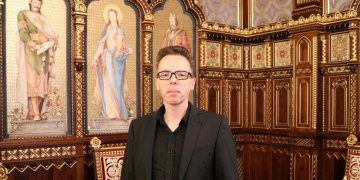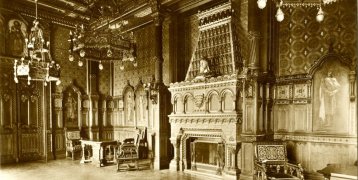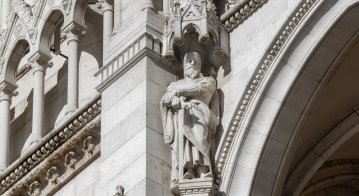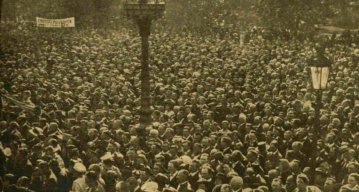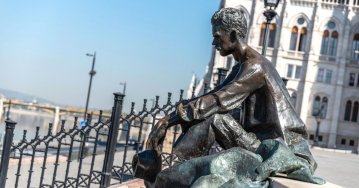Csilla Halász
Cikkek
"The architects of the Royal Palace were geniuses" says the re-designer of St. Stephen's Hall
August 20, 2021 at 10:00 AM
As an architect, he redrawn every detail of the St. Stephen's Hall, which opens on 20 August: the windows, historic doors, and parquet floors of the southern connecting wing of the Royal Palace. Tibor Angyal has been recreating the historic ceremonial hall destroyed after World War II for six years and, with experience, he claims that the reconstruction of the Royal Palace, which was destroyed with mad rage and method after the war so that not a single square metre of original space remains, is a historic opportunity.
"The most lavish fireplace ever made in Hungary"
June 5, 2021 at 10:30 AM
Hardly anyone would doubt that the country’s most famous fireplace stood in the St. Stephen’s Hall of the Royal Palace. Vilmos Zsolnay lived to see the making of the sophisticatedly designed and executed masterpiece made of Zsolnay majolica, but he could no longer supervise its installation: he died not long before. Lucky posterity, however, may soon admire the work destroyed after World War II, as the former masterpieces were rebuilt under the National Hauszmann Program in the reborn St. Stephen's Hall. In this article, Pestbuda looks at the behind-the-scenes of the redesigning of the fireplace.
Béla IV, died 750 years ago, founded Buda but does not even have a memorial plaque in the Castle District
July 6, 2020 at 8:00 AM
After the Tartar invasion, King Béla IV founded the city that is known today as Buda. He was looking for a place that would be impregnable during a next Mongol attack. He surrounded the plateau of Castle Hill with thick walls, parcelled and populated the area, and built monasteries and churches. Béla IV's Buda still exists today, the castle walls he built, the streets he walked on, the house walls and window frames he could see, the booths he could sit in, but not even a plaque preserves the name of the founder here.
The builder of Buda Castle - How did Alajos Hauszmann win the commission?
June 20, 2020 at 9:00 AM
We will never know exactly how many architects imagined that they could be the designer of the Buda Castle. Those who, after the death of Miklós Ybl, felt a vocation to continue the work already begun also tried to find connections and get recommendations from the members of the Public Works Council, the construction committee, and higher circles. Eventually, Alajos Hauszmann was given the job, who was silently waiting for the decision, not even telling his family that he was the candidate.
The mourning Budapest - The traffic of the capital and the heartbeat of the nation stopped 100 years ago
June 4, 2020 at 7:00 PM
On that day, no shops were opened in Budapest, no performances were held, cafés, restaurants and clubs remained closed. In the schools of the capital, the teachers told the students about the injustice they had experienced in Hungary, moved, with tears in their eyes. A multitude of people expelled from the torn-off area staged a silent protest on Andrássy Avenue against the 4 June Treaty of Trianon. All Pest newspapers were shocked to report on the fragmentation of Hungary, and regardless of party affiliation, they unanimously rejected the Paris decision.
Poetry Day Walk - Statues of the greatest Hungarian poets in Budapest
April 11, 2020 at 10:00 PM
On this year's National Poetry Day, 11 April - the birthday of Attila József - the public, community poem readings, which have already become a tradition, were cancelled, and we could not even visit the statues of the greatest Hungarian poets to show our respect and gratitude. Thus, Pestbuda offers only a virtual walk between the works depicting our national greats in Budapest.

